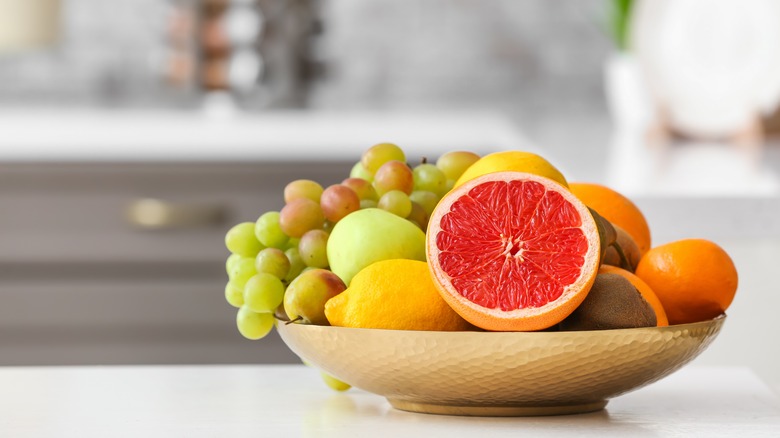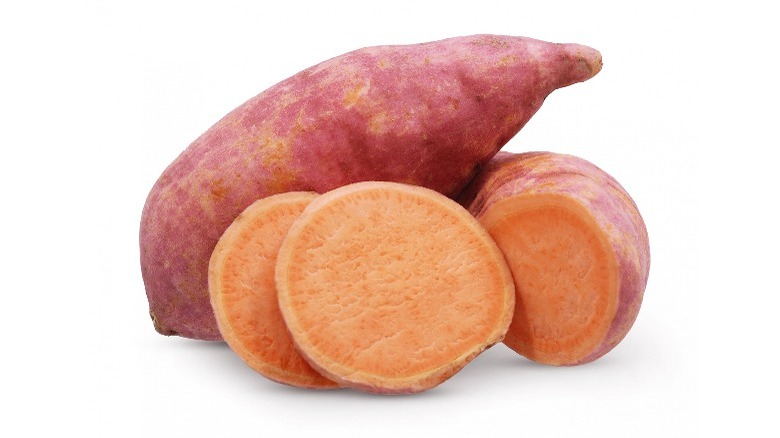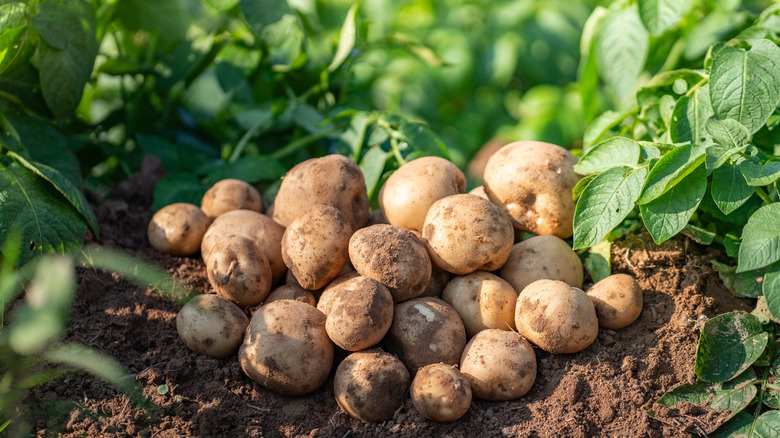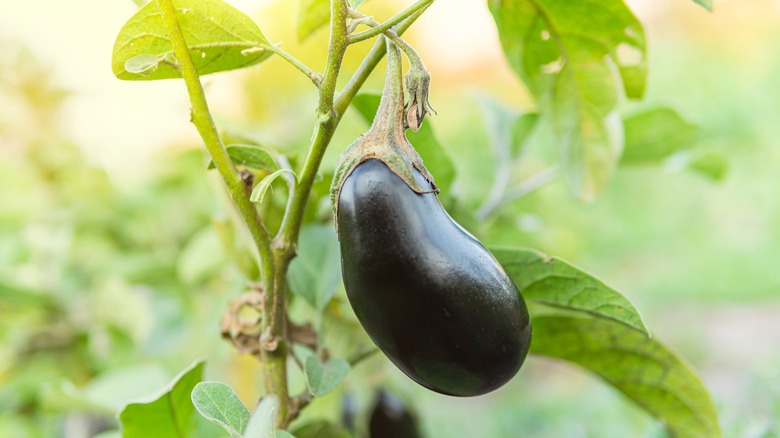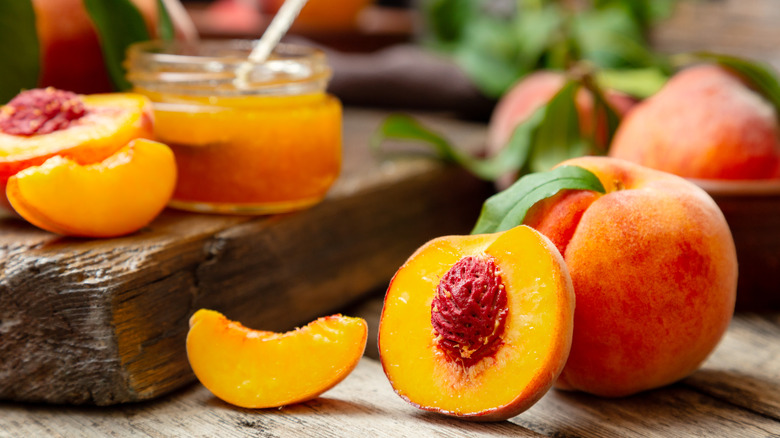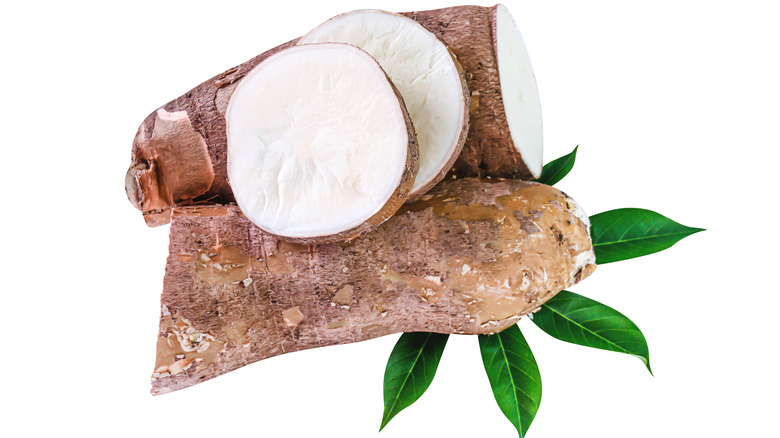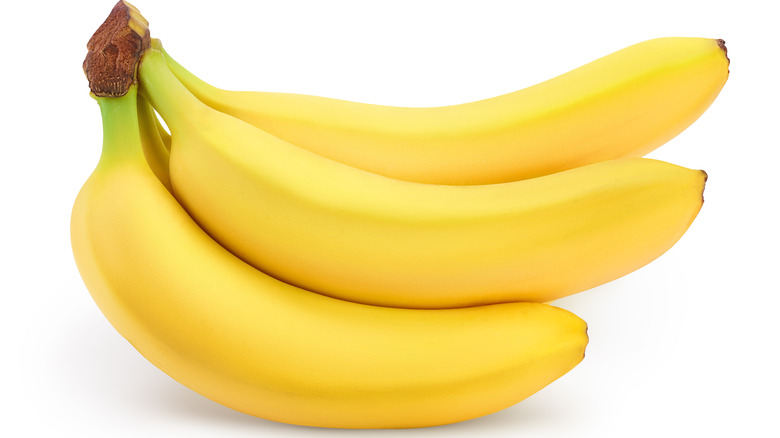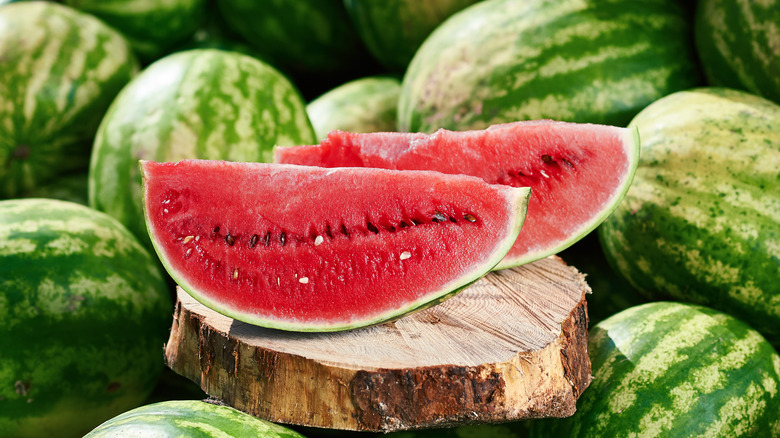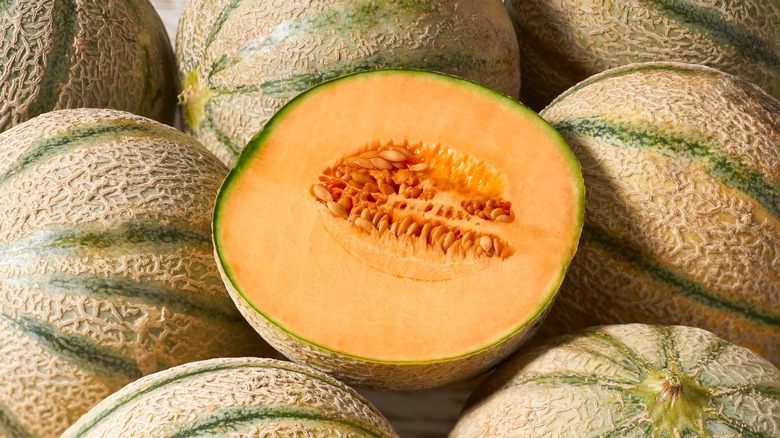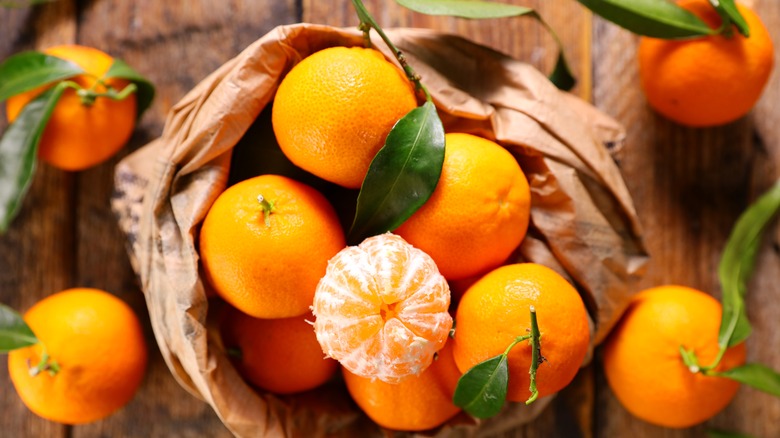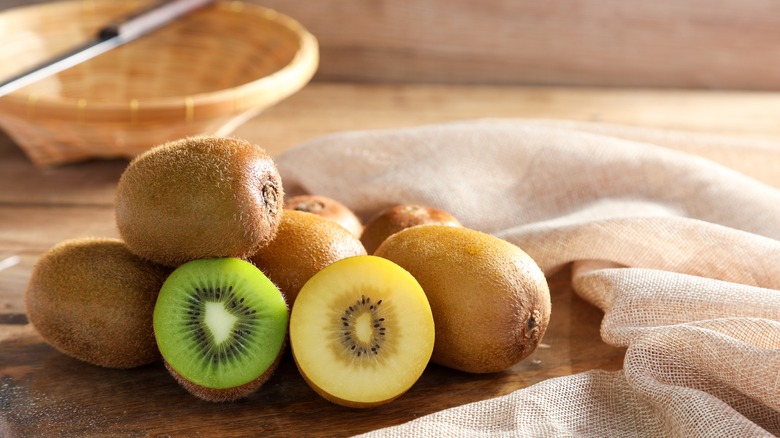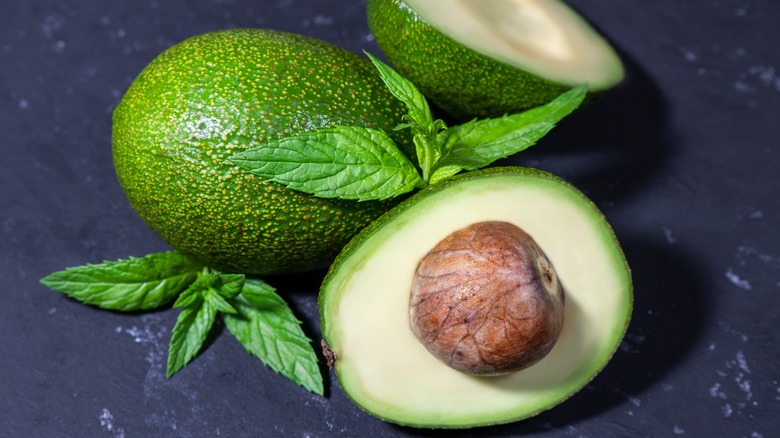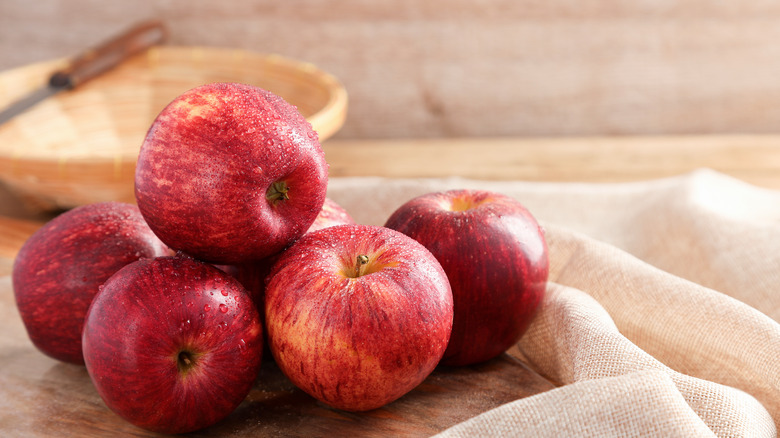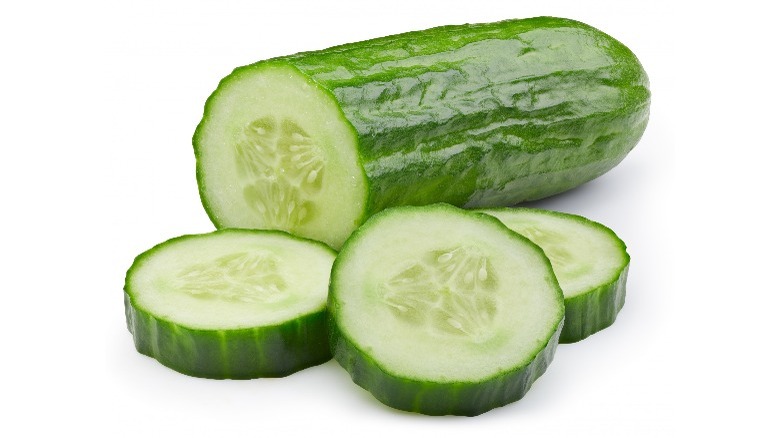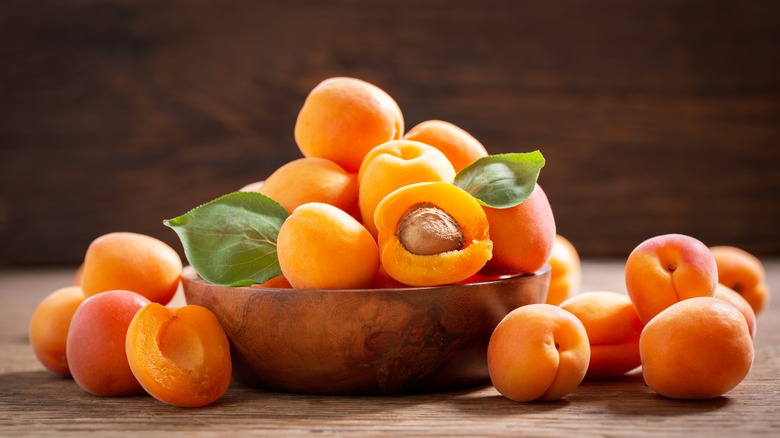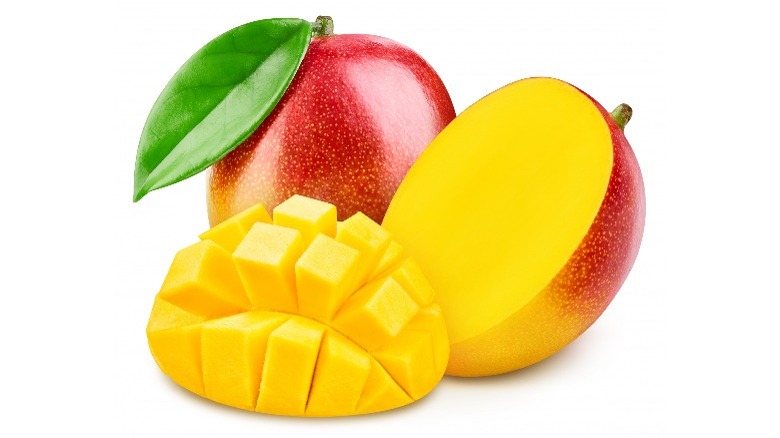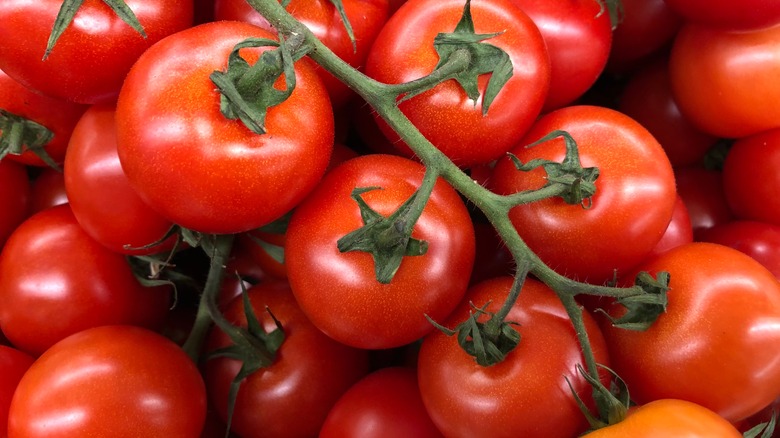Can You Eat These Food Peels?
We may receive a commission on purchases made from links.
You have likely prepared a meal that involved the time-consuming and difficult task of cutting peels off of fruits or vegetables. You have probably also wondered whether it's actually necessary or not to remove the peels. While many peels can in fact be eaten, a surprising number shouldn't be ingested.
Fruit and vegetable peels often contain vital nutrients that can be incredibly beneficial to the diet. Not only can they improve your diet, but they can also save time when it comes to kitchen prep and cut down on kitchen waste. But not every peel can or should be eaten. It is important to know which peels are potentially hazardous, inedible, or just taste bad. With so many fruits and veggies out there, it can be hard to know where to start. To help you along, we have compiled a list of 17 peels and give you the low-down on whether or not they can or should be eaten.
Do eat potato and sweet potato peels
When making mashed potatoes or latkes, removing the peel is practically second nature. However, while this can create a rich and creamy texture, you might want to think twice before removing the skins. Potato skins actually contain important nutrients, such as iron, potassium, and niacin (per SFGate). These nutrients help the body better absorb other nutrients. According to WebMD, potato skins can also contain up to 12 times as many antioxidants as the rest of the potato.
For an extra burst of nutrition, try leaving the skin on a sweet potato. Healthline reports that sweet potato skins have an added kick of fiber and vitamins C and E. However, they caution that many of these nutrients are removed if the potato is peeled.
You should absolutely be eating the peels of these potatoes, but it's very important that you clean them properly before doing so, as noted by Masterclass. Potatoes are grown underground and tend to hold onto the dirt in their nooks and crannies. They can be cleaned by either rinsing them under cool water and gently scrubbing them with a towel or kitchen brush or, for a less hands-on approach, by loading them on the top shelf of the dishwasher and running it on the cool cycle. Dish soap should not be used with either method.
Do not eat green potato peels
Of course, no vegetable is perfect, not even the potato. There is one case when it is not recommended that you eat the peel of the potato: when the peel is green.
This is not an old wives tale; green potatoes really will make you sick. Potatoes turn green when exposed to warmth and light (per Britannica). This particular environment tells them that they should be growing, so the potato ramps up production. However, as part of this, the potato starts to create a neurotoxin called solanine and a toxin called chaconine. These toxins help protect the sprouting potato from pests, but they are harmful to humans.
One study suggested that just one 16-ounce green potato was enough to make an adult sick. A smaller amount would likely be enough to make a child sick. Symptoms of green potato toxins include vomiting, diarrhea, fever, and headaches. Cooking the potato will not eliminate the toxins, so if you find yourself with some green potatoes, be sure to remove the skin and any green parts of the flesh.
Do eat eggplant peels
Some people might be surprised to learn that they should leave the peel on their eggplant. Eggplant peels get a terrible reputation for being bitter and tough, but as long as the eggplant is fresh and ripe this should not be the case, as noted on Foodiosity. Removing the peel is one of the mistakes everyone makes when cooking eggplant.
The deep purple skin of this fruit isn't just beautiful — it is packed full of essential nutrients. The purple skin contains anthocyanins (per The New York Times), which can help reduce the risk of and treat a variety of ailments, such as diabetes, inflammation, and heart disease (per Healthline). If you remove the skin, you are removing all those wonderful benefits. Additionally, as chef Maren Epstein points out, leaving the skin on actually helps the eggplant hold its shape while cooking.
Leaving the skin on your eggplant is both practical and beneficial. However, if you find yourself with an old eggplant that has leathery skin, feel free to peel it.
Do eat peach peels
Peach skin has a fuzzy texture that, while fun to touch, is not exactly appetizing. That being said, you might be surprised to learn that peach skin is edible, provides plenty of benefits, and is not as unpleasant to eat as you might think.
Many people eat fruit because of the fiber it adds to the diet. But, as Health Digest notes, if you remove the skin of the peach, you are removing a lot of the beneficial fiber. Additionally, peaches eaten with the peel contain twice as many antioxidant polyphenols as their peeled counterparts.
If eating the skin right on the peach doesn't appeal to you, don't worry. All is not lost. One of the easiest ways to incorporate peach peels into your diet is by leaving them on when you bake peaches in a pie. According to Eat Like No One Else, baking peaches softens the peel to the point that they are hardly noticeable. Seriously. The peel breaks down enough to become homogenous with the rest of the pie, leaving you with the benefits of the peach peel without any textural issues.
Do not eat cassava peels
Cassava, or yuca, is an important root vegetable that is considered a food staple in many parts of the world (per Medical News Today). However, if not prepared correctly, cassava can be toxic. The vegetable contains dangerous levels of the poison cyanide, and if care is not taken to prepare it, the eater could become very ill.
To prepare cassava correctly, not only does the root need to be cooked thoroughly, but the peel must be removed. This will help eliminate the cyanide from the vegetable. While the threat of cyanide might be scary to some, rest assured that as long as proper steps are taken, cassava is edible.
According to Morning Chores, the plant is incredibly hardy, which makes it easy to grow. Similar to other root vegetables, cassava contains vitamin C and niacin. While the leaves can be cooked for an extra boost of protein, the peel should not be eaten (via Livestrong).
Do eat banana peels
What is the first thing you do when eating a banana? You open up the peel to reveal the sweet soft fruit within. Whether you are eating the fruit straight, baking banana bread, or making a smoothie, the first step is invariably to peel the banana. That is why it is so surprising that the banana peel is edible and beneficial.
WebMD reports that banana peels contain magnesium, potassium, protein, and vitamins B6 and B12. They also contain plenty of fiber, which makes you feel full and can help fight diseases such as cancer and diabetes. Therefore, bananas — and their peels — are an excellent addition to your diet.
But how do you eat them? Banana peels are tough and don't exactly appear to make an appetizing snack. One easy way to incorporate them into your diet is by blending them into a smoothie. Another way, according to The Great British Baking Show winner Nadiya Hussain, is to incorporate them into savory dishes. In an interview with The New York Times, Hussain says the peels can be cooked, pureed with green chilis and garlic, then sautéed for a tasty side dish. Banana peels can also be used to make vegan bacon and in dishes such as banana peel curry.
Do eat watermelon peels
It might seem counter-intuitive, but you should really be eating the white rind of a watermelon. Before you say no, hear us out: eating the watermelon peel has many health benefits.
Watermelon rinds include high amounts of fiber and an amino acid called citrulline. Citrulline dilates the blood vessels, which can improve oxygen flow to the muscles and help boost physical performance (via Healthline). The amino acid has also been shown to help lower blood pressure.
Now, rest reassured we are not telling you to just chow down on a watermelon rind; that would not taste very good. According to Watermelon.org, a website entirely devoted to the fruit, there are many ways to enjoy watermelon as a whole. Like cucumbers, watermelon rinds can be turned into pickles. They can also be juiced along with the rest of the fruit and included in a refreshing bowl of gazpacho. For a savory dish, slice the watermelon rind with carrots and other vegetables and add it to stir fry for an additional boost of fiber. For a sweet finish to your meal, snack on watermelon rind candy.
Do not eat cantaloupe peels
While some melons have rinds that are safe to eat, the cantaloupe is one variety that is encased in a rind that should not be consumed. Unlike watermelon, the skin on a cantaloupe is rough and can harbor harmful bacteria and pathogens. The rough skin of the cantaloupe makes it difficult to clean thoroughly and allows bacteria to make a home on it.
According to Food Safety News, cantaloupes carry more bacteria that cause foodborne illnesses than any other produce. Because cantaloupes grow in the ground, pathogens, such as salmonella Panama, in the soil and rainwater become embedded in the rough skin. After being harvested, most fruits and vegetables lack the nutrients and moisture required for bacteria to grow. This is not the case for cantaloupe. Instead, bacteria, such as E.coli, can easily multiply on the melon's surface.
Before slicing a cantaloupe and removing the cantaloupe's rind, it's important to clean the surface thoroughly by scrubbing it with a brush, as noted by Delishably. To prevent the bacteria from spreading into the freshly-cut melon, the fruit should be eaten in short order.
Do eat orange peels
Not only is it safe to eat orange peels, but they're also a very healthy part of the fruit. The peel of this citrus fruit contains several vitamins and minerals, such as fiber, magnesium, and calcium, as well as flavonoids, which can help prevent cancer and heart disease (via Manipal Hospitals). Orange peels can be used to help treat asthma by preventing phlegm buildup, and they can boost the immune system thanks to vitamins A and C. Additionally, the peel's anti-inflammatory properties help treat heartburn and diarrhea.
There are some drawbacks, though. Orange peels may contain pesticides, so they need to be washed thoroughly (per Healthline). Also, since the skins have such a high fiber content, eating large amounts may give you an upset stomach.
One of the most delicious ways to eat an orange peel is by candying it. Candied orange peels are sweet and sour, and they make a great snack or gift. They can be eaten on their own, or mixed into cakes and other baked goods. For a sweet and savory option, try tossing your orange peels on the grill.
Do eat lemon peels
The peel of a lemon is another citrus peel that you should be eating. Lemon peels often appear on cocktail drinks as a discardable garnish, but they are edible and bring plenty of nutritional value.
In a medical review by Wendie Trubow, M.D., she states that lemon peels are high in calcium, which is important for bone health (per MindBodyGreen). Lemon peels also contain polyphenol flavonoids that help lower bad cholesterol and minimize the risk of high blood pressure. Vitamin C is found in the lemon rind as well, and by eating 1 tablespoon of zest, you'll get 9% of the daily recommendation (per Healthline).
While lemon peels can certainly be used as a garnish, there are many other uses for them that are tastier and healthier. Incorporate the citrus rinds into your diet by adding them to tea, candying them, including them in baked goods and recipes, dehydrating them, or adding them to dressings and sauces.
Do eat kiwi peels
The kiwi's peel has a fuzzy and prickly texture that may make it seem like it shouldn't be consumed. However, not only is it edible, but it's also healthy.
Like many peels on this list, kiwis are high in fiber (via Healthline). In addition, they also contain folate, which is important for cell growth, and vitamin E, which has significant antioxidant properties. In a paper published by the National Library of Medicine, it was shown that by eating the skin of the kiwi in addition to the flesh, you'll boost your fiber intake by 50% and vitamin E by 34%.
You don't need to do anything special with kiwi skins to be able to eat them. Unlike the skins of bananas and citrus, all of which necessitate some form of grating or cooking to make them palatable, kiwi skins can be cut with the fruit and eaten raw. If the prickly texture gives you pause, Food52 recommends rinsing them under cold water and scrubbing off a bit of the excess fuzz.
Do eat avocado peels
There's one thing of which we are certain: humans love avocados. While the flesh of the fruit — yes, it's a fruit — is creamy and savory, the peel is incredibly tough. However, that is not to say that the peel isn't technically edible. In the very basic sense, it is, as the skin is not poisonous, per Foods Guy. In fact, according to Popular Science, there are some great nutritional benefits found in it.
The peel of the avocado is rich in flavonoids, antioxidants, and phenols (via Foods Guy). According to the Garvan Institute of Medical Research, it also contains an antioxidant that has been shown to kill breast cancer cells.
There are some creative ways to use the peels so you don't miss out on their health benefits. Prepared Cooks recommends drying them in the oven, then grinding them into a powder that you can add to foods. To make things even easier, Food Guys suggests simply using a high-powered blender and mixing them into a smoothie or dip.
Do eat apple peels
You know what they say: An apple a day keeps the doctor away. According to WorldAtlas, apples are one of the "most popular fruits in the world." They make a great on-the-go snack and need no prep other than washing. Yet, despite this fact, many people still remove the apple's skin before eating it. That is a shame because the peel of an apple offers a host of healthy benefits.
As noted by HealthShots, apple peels are chock full of antioxidants, fiber, minerals, and vitamins C, K, and A, which are good for the health of bones, nerves, the heart, and the brain. They also contain quercetin, which is an anti-inflammatory that helps protect your heart and lungs. According to The Micro Gardener, there are 50% more phytonutrients in an apple with a peel than in one without a peel.
Just as with any fruit or vegetable, it's important to wash the apple before eating it. While the wax coating used on their skin is edible, it can still collect bacteria and dirt (per USApple). To clean the apple, simply rinse it under warm water and gently scrub it with a soft brush or towel.
Do eat cucumber peels
Why do we make more trouble for ourselves than we need to by peeling vegetables? Many, such as cucumbers, are easier to prepare and better for you with their peels left on rather than removed.
While cucumbers as a whole contain plenty of vitamins and nutrients, the bulk is found in the peel (per Livestrong). As noted by NDTV Food, the rich, deep green color of the cucumber peel shows that it contains antioxidants and nutrients that help power the body and keep it running well. A cuke peel also contains fiber that helps keep the digestive tract clean and running smoothly, as well as protein to help build muscles. By eating a large cucumber with the peel on, you'll get 41% of your daily needs of vitamin K, while removing the skin leaves you with a mere 17% of your daily needs of the vitamin.
The best part is that all of these benefits are available with very little work. Simply clean and cut the cucumber, and it is ready to use. The vegetable tastes great raw, tossed in a salad, and of course, pickled.
Do eat apricot peels
People often remove the peel of an apricot before eating it, just as they do with peaches. However, apricots are one of the best fruits to eat with their peels. The pit is the only part of the fruit that should not be eaten.
In an article for Shape, Kirsten Nunez discusses the reasons why you should always eat the skin on apricots. She explains that the skin contains large quantities of both soluble and insoluble fibers, which help promote a healthy gastrointestinal tract. Additionally, apricot skin is rich in vitamins A and C, as well as potassium (per Pantry Tips), which helps the cells in our body maintain the proper levels of fluid, as noted by the Harvard School of Public Health.
One interesting thing about apricot peels is that they practically disappear when cooked in recipes such as apricot jam and apricot puree. Fresh apricot pie is also made with the skins left on the fruit.
Do eat mango peels
Mangos are juicy and delicious tropical fruits. Their bright orange flesh is slightly firm and appealing, and according to WebMD, the peels contain powerful antioxidants that may help fight and prevent cancer. Additionally, the skin of a mango is rich in triterpenoids and triterpenes, which help fight diabetes.
The peel can be eaten without any preparation other than a thorough rinsing with water. However, they tend to have a leathery texture and an unappealing flavor. To make the peels more edible, they can be dehydrated and crushed into a mix with sugar and spices. For a sweet treat, try boiling the peels in sugar cane syrup to create a mango peel extract for baking.
While mango peels are edible and generally considered harmless, there is one caution when it comes to eating them: They contain urushiol. Urushiol is the same chemical compound found in poison ivy. Those who are sensitive to this compound may have an allergic reaction to the peels, which can result in a rash or breathing difficulties. If you are sensitive to urushiol, you should avoid eating mango peels.
Do eat tomato peels
Although many people confuse tomatoes to be vegetables, they are actually a fruit. Tomatoes are one of the healthiest summer fruits, as noted by HealthDigest, with both the peel and flesh offering many nutritional benefits.
In a study published by ScienceDirect, it is noted that tomato skins have essential amino acids and monosaturated fatty acids. They are also rich in powerful antioxidants, such as lycopene, which helps improve heart health. In fact, the skin on a tomato has 2.5 times more lycopene than in the pulp. Additionally, the peel is a great source of zinc, calcium, selenium, and flavonoids, which have anti-inflammatory properties.
Tomato skins don't require any special prep prior to eating them aside from being rinsed and gently scrubbed under warm water. They can be eaten raw or cooked in sauces and soups. If you aren't a fan of the texture, but still want to reap the health benefits, the skin can even be dried and turned into a powder.
